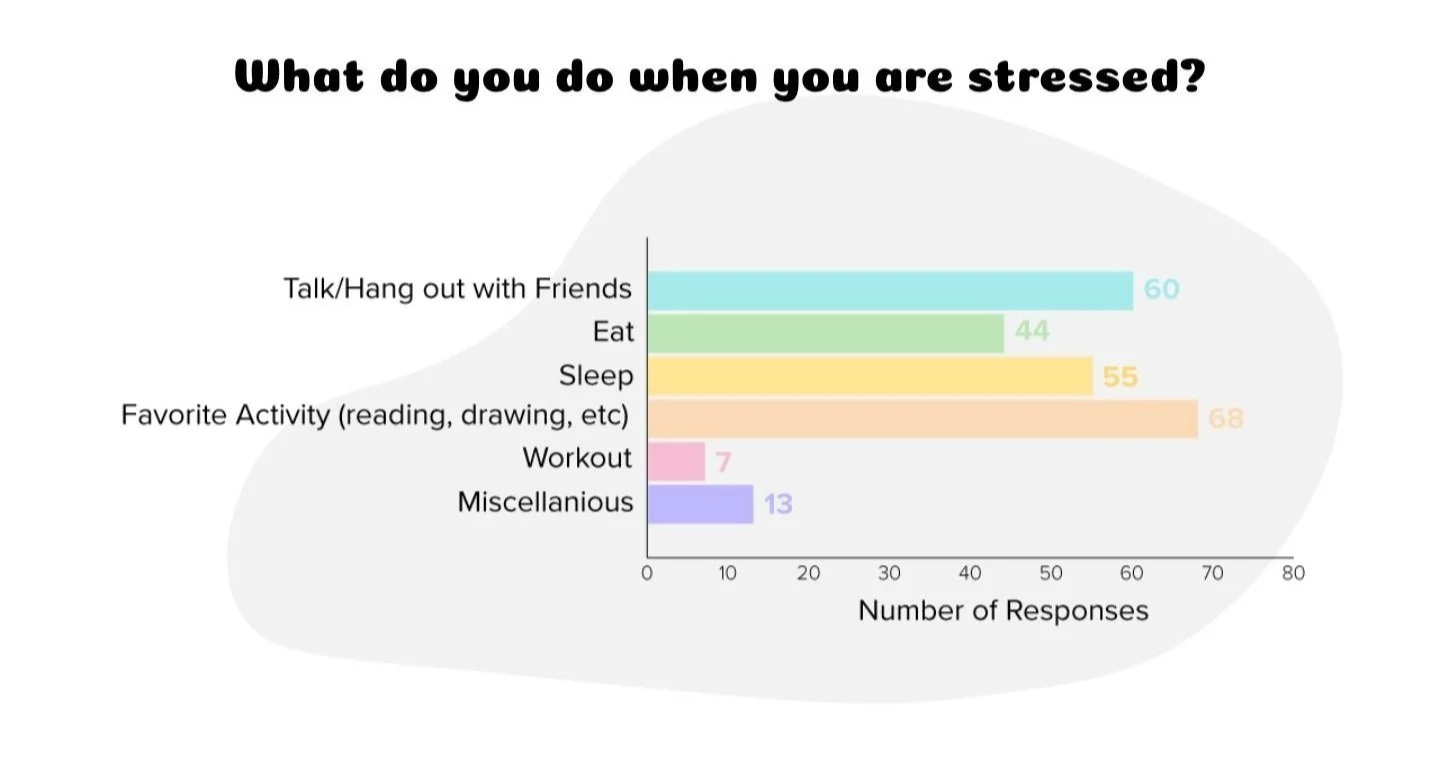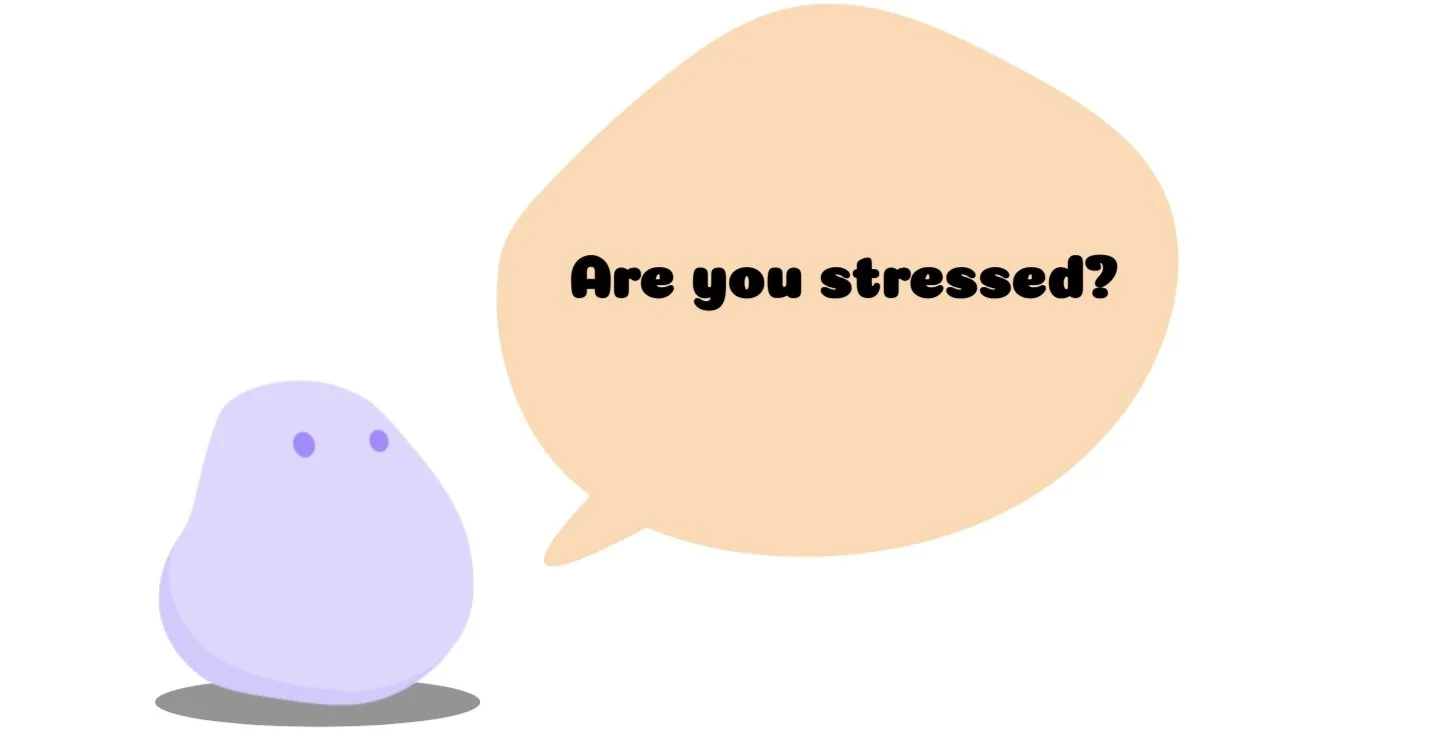Day2Day
Day2Day’s mission is to help relieve stress by providing our users with a framework to cope with stress through meaningful activities. By engaging with their activities, and defining meaning to their time, our users can achieve small steps to promote good stress and a positive mindset.
View the On-Boarding Video or feel free to view our full process book!
Microsoft Design Expo, Design Challenge: At the expo the challenge was to design a product, service or solution that enables a healthier future for select stakeholders and/or users.
Team: Akshita Bawa (Research Analyst, Information Architect, Junior Designer); Sama Srinivas (Lead Designer); Lilian Yang (3D Artist, Illustrator and Co-Lead Designer); Chloe Choi (Lead Developer, Technology Expert)
Time Frame: 20 Weeks
Process
Initial Research and Problem Identification
During our research, we found that a consistent and growing underlying factor exacerbating the poor health we see today is stress. According to the American Institute of Stress: 33% of people report extreme levels of stress. 77% of people experience stress that affects their physical health, and 73% experience stress that affects their mental health. These are significant percentages that only seem to be rising due to a lot of factors including socio-cultural and socio-economic status. Hence we decided to focus on tackling stress with a base in psychology and our own experiences which were heightened especially during the COVID-19 pandemic.
Primary Research and Competitive Analysis
2.1 Questionnaire
We formulated 13 questions to ask people around us - family, friends and peers at the university to support our initial secondary research as well as to make design choices. The questions ranged from asking them about their routine, to causes of their stress, the apps they use to relieve it etc. Please click here to see the list of all the questions.
We got an overwhelming response as 100 people filled out the form. The responses supported our hypothesis as 58% of respondents indicated high levels of stress on a scale of 1 to 10 and 75% of respondents indicated that they had activities they wanted to do but never made time for. We found that the majority of respondents already subconsciously do their favourite activities to relieve stress. We wanted to promote this practice through our solution by making this decision a conscious and consistent habit.
2.2 Scientific Technology
The scientific methodology we chose to support this idea is positive psychology. There are 5 pillars to positive psychology and they are: positive emotion, engagement, relationships, meaning, and achievements. By focusing and applying these 5 pillars into daily life, we can boost our wellbeing and help convert our bad stress to good stress.
We wanted our product to ficus on fostering engagement, meaning, and achievement. All three of these promote good hormones to flood the body, a sense of satisfaction in our daily work and drive to thrive.
2.3 Competitive Analysis
After establishing our methodologies and purpose, we wanted to take a look at the competitive landscape to see whether our idea could be viable in the market. We found a few different categories of competitors from our research and the questionnaire responses.
Organising Tools - Notion, which allow the user to take notes, manage their tasks and update blog posts in real-time
Note Taking Tools - Roam Research and Obsidian which gives users freedom to create their own template but require regular updating and iterations
Dedicated Planners, Schedulers and Task Manager Tools - Microsoft To Do and Google Task
Habit Forming Apps - Forest which promotes productivity by encouraging users to reduce screen time and in turn planting trees in-app and subsequently in reality
We decided to take a similar route of using a reward system to help motivate our users to accomplish their activities. While we wanted our users to organize their time, our main focus was adding meaningful activities to daily life.
3. Solution
With all the research, we came up with the idea of Day2Day.
Day2Day’s mission is to help relieve stress by providing our users with a framework to cope with stress through meaningful activities. By engaging with their activities, and defining meaning to their time, our users can achieve small steps to promote good stress and a positive mindset.
3.1 Why?
While designing in the midst of a pandemic, we noticed how external stressors can take over our reality and overwhelm our mental health. While staying at home generally gives individuals more time, it is their responsibility to use it effectively and healthily. We wanted to create a solution that would help people do just that while promoting de-stressing activities, and give users the opportunity to see how they’ve progressed in their journey of self-care.
3.2 Four Core Values
Our 4 main core values are: Stability, Self care, Growth and Positivity
We hope for our users to find a good balance in their day to day lives, to spend time on themselves, and grow to be positive and optimistic. These values are reflected in our user-interface design. We hope to portray a very happy and calming virtual environment for our users. And technology-wise, we want to make a smart app that adapts to the user's schedule and location in real time.
3.3 Bloob
This is Bloob!
Bloob is Day2Day’s bot and mascot. Users can customise Bloob in-app. (More on that below)
3.4 App Flow
Stage 1: Beginning our onboarding, is a pretty industry standard process of creating an account. Bloob is on every screen to provide the user with directions but also allow them to familiarize themselves with their new best friend.
Stage 3: We give the user the option of importing or creating their schedule. There is the google, and apple calendar integrations. They can also upload a calendar in the file type .ics. This is the first part of the machine-learning technology, where the app will be able to use their schedule and predict times for their activities.
Stage 5: On the day of the activity, before the scheduled time, Day2Day will send the user a notification to remind them of their scheduled activity in which the user can either confirm the time or reschedule it. The app’s machine learning component will take note of what times the user is not free outside of their existing schedule and work around those times as well.
Stage 7: As the user completes activities, they will receive in-app currencies to use on customizations for their own Bloob avatar.
Stage 2: One important part of this onboarding process in the Intention screen. We want to let our users know what the app can be used for, but also setting their intention is a great way to start practicing the meaning pillar of positive psychology.
Stage 4: The user will also be able to input specific activities they want to do and allot specific times and days they want to do these activities. Day2Day will then find times on these days in between the user’s schedule for these activities. They will be able to see the predicted week, and customize their schedule from there.
Stage 6: When the scheduled time arrives, the app will assume the user is completing the activity and will send a notification at the end of the scheduled time to remind the user to fill out their journal entry. This journal entry will be accessible for 24 hours and if not filled out, Day2Day will not count this activity in its Journey Overview. In the journal entry, the user will document their activity in whatever way they see fit, whether through photos, videos or writing. They will also document how they felt after the activity, whether it helped them relax or not, so that we can better understand what activities we should be recommending.
Stage 8: Other technologies we think are vital to the execution of this app are geolocation and weather technologies. We wouldn’t want our app to recommend going for a run when it’s raining outside! But we also think having the user’s in-app environment reflect their real one will reflect some familiarity and promote a good ambience.
Originally, we also wanted to include a community aspect to promote the relationships pillar of PERMA, but we found that we were moving far away from our original purpose of relieving stress. Social-media like communities can be a huge source of stress for some people. So for now, Day2Day is an individual experience.
Potential Challenges
These are some of the potential challenges the product/solution/app can face.
Future Steps
We think as a brand once we establish our category clarity and know and love our purpose we can focus on the pillars of arming our communities and creating remarkable experiences.
Promote Bloob merchandise to spread the positivity to materials in someone’s life
Add the app-experience are video/image compilation (somewhat like how stories operate in snapchat)
Add atmospheric sound to help reflect and enhance the in-app environment
Educate people about Positive Psychology
Bring virtual to reality by having community activity-based meet ups















